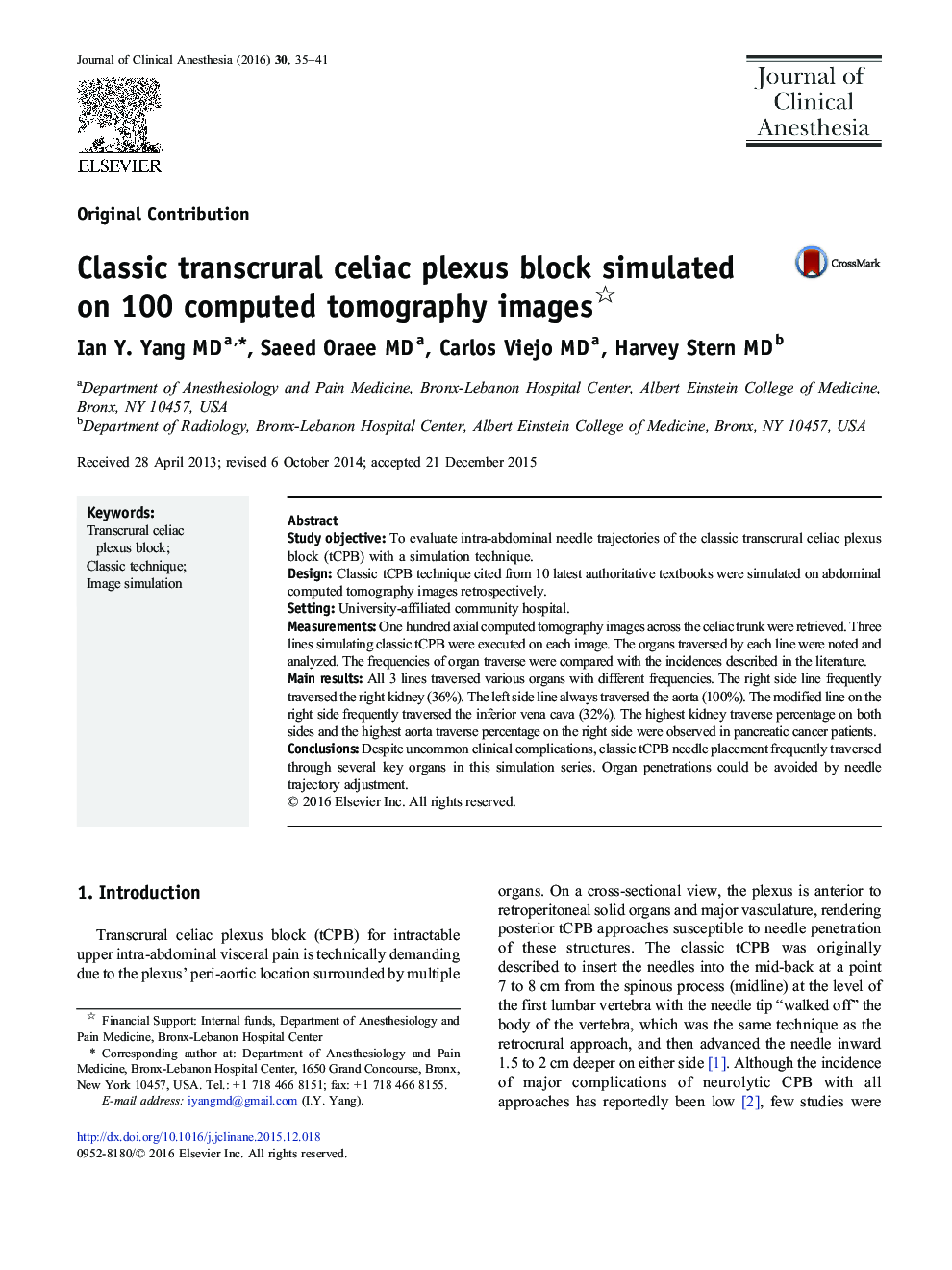| Article ID | Journal | Published Year | Pages | File Type |
|---|---|---|---|---|
| 5884902 | Journal of Clinical Anesthesia | 2016 | 7 Pages |
â¢Classic transcrural celiac plexus block needle placement technique was simulated on abdominal CT images.â¢Needle trajectories were examined in relation to the vital organs surrounding to the celiac plexus.â¢Frequent traverses through several key organs by classic needle placement were seen in this series.â¢Organ penetration avoidance may need needle placement adjustment accordingly.
Study objectiveTo evaluate intra-abdominal needle trajectories of the classic transcrural celiac plexus block (tCPB) with a simulation technique.DesignClassic tCPB technique cited from 10 latest authoritative textbooks were simulated on abdominal computed tomography images retrospectively.SettingUniversity-affiliated community hospital.MeasurementsOne hundred axial computed tomography images across the celiac trunk were retrieved. Three lines simulating classic tCPB were executed on each image. The organs traversed by each line were noted and analyzed. The frequencies of organ traverse were compared with the incidences described in the literature.Main resultsAll 3 lines traversed various organs with different frequencies. The right side line frequently traversed the right kidney (36%). The left side line always traversed the aorta (100%). The modified line on the right side frequently traversed the inferior vena cava (32%). The highest kidney traverse percentage on both sides and the highest aorta traverse percentage on the right side were observed in pancreatic cancer patients.ConclusionsDespite uncommon clinical complications, classic tCPB needle placement frequently traversed through several key organs in this simulation series. Organ penetrations could be avoided by needle trajectory adjustment.
